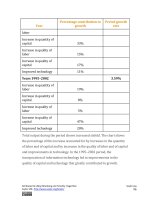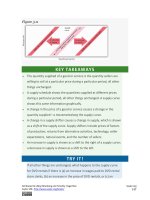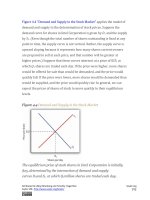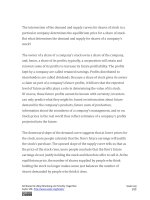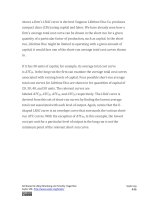Authors libby rittenberg 756
Bạn đang xem bản rút gọn của tài liệu. Xem và tải ngay bản đầy đủ của tài liệu tại đây (458.14 KB, 1 trang )
important political tool for proponents of an increase in the minimum
wage. The validity of those results has come under serious challenge,
however, and the basic conclusion that a higher minimum wage would
increase unemployment among unskilled workers in most cases remains
the position of most economists. The discussion in the Case in Point
summarizes the debate.
KEY TAKEAWAYS
In a competitive labor market, an increase in the minimum wage
reduces employment and increases unemployment.
A minimum wage could increase employment in a monopsony labor
market at the same time it increases wages.
Some economists argue that the monopsony model characterizes all
labor markets and that this justifies a national increase in the
minimum wage.
Most economists argue that a nationwide increase in the minimum
wage would reduce employment among low-wage workers.
TRY IT!
Using the data in Note 14.5 "Try It!", suppose a minimum wage of $40
per day is imposed. How will this affect the firm’s use of labor?
Case in Point: The Monopsony-Minimum
Wage Controversy
While the imposition of a minimum wage on a monopsony employer
could increase employment and wages at the same time, the possibility
is generally regarded as empirically unimportant, given the rarity of
cases of monopsony power in labor markets. However, some studies
Attributed to Libby Rittenberg and Timothy Tregarthen
Saylor URL: />
Saylor.org
756
